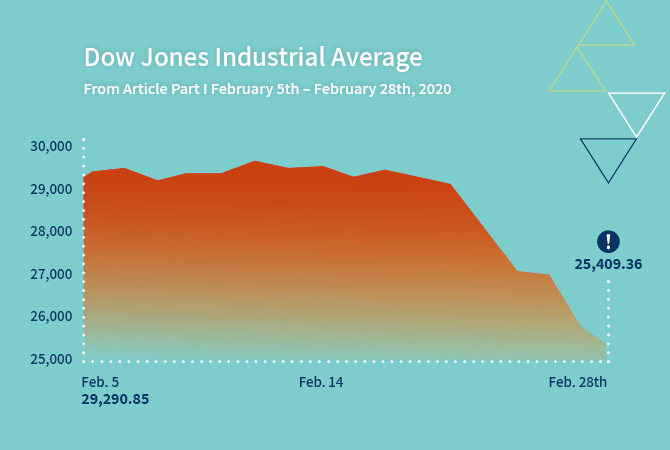How to Manage the
Coronavirus Business Impact
Steven Minsky | March 3, 2020

Don’t “wait and see what happens.”
Top public health officials urge Americans to prepare for a coronavirus crisis in U.S. A CDC official said, “It’s not so much a question of if this will happen anymore but rather more a question of exactly when.” This post is a corollary to my business continuity plan blog post on February 5th outlining how to incorporate the CDC planning tools into your existing BCP plans as you prepare for the Coronavirus business impact.
What will your organization do when the red on this global pandemic tracker in China looks similar on geographies across Europe and North America? What would happen to your organization if you experienced a sudden 40%+ reduction of your workforce due to illness? Is your organization in one of the many industries expected to experience serious revenue downturn from this outbreak? Are our organizations really as prepared as we think we are for the widely anticipated coronavirus pandemic, also known as Covid-19?
When I wrote a warning about the coronavirus on February 5th , many in our customer base took action. The business risks of Covid-19 are predictable and the impacts on our organizations, customers, vendors and communities are knowable.
Managing The Coronavirus Business Impact
Coronavirus Risk Management is a technique and software infrastructure that makes those impacts clear to your organization, industry, and geography. It generates a plan of action and provides a mechanism for communication and implementation. A risk management framework engages everyone in your organization to support the preparations and changes that need to happen. The result is a dramatic reduction in the negative impact from the event.
The key to effective risk management in times of rapid change is to drop these two assumptions from your business planning, especially when it comes to Covid-19 business preparation:
- “Let’s wait and see what happens.” – A natural tendency when the future is showing itself to be radically different than the present is to panic and yet do nothing, as fear itself or “paralysis through analysis” is debilitating. When the uncertainty lifts and all the factors are known to a reliable degree, it will be too late to make appropriate changes that could have and should have been made, which results in leaving your organization, customers, vendors and community unnecessarily vulnerable
- “All we need to do is get through this and things will return to normal.” – Human behavior rarely shifts quickly. However, with a major crisis, impacts from these events shift the market for the foreseeable future. A new normal sets in with new behaviors. All products and services need to adapt to this new reality. The better prepared your organization is to adapt, the more likely it will be to survive.
Turn fear and panic into productive and proactive practical steps to prepare.
The Dow Jones has recently had its worst week since the 2008 financial crisis; however, there is still time to use risk management techniques to take action before the next series of disruption strikes.

The current wave of infections in China will likely begin to drop off each month from now through May 2020. However, expect to see the coronavirus resurge in Asia as a second wave of infections begin in September of this year and widespread infections during the peak contagion months from December 2020 through March 2021. The seasonal flu already kills 291,000 to 646,000 people worldwide each year. The World Health Organization estimates that worldwide, annual influenza epidemics result in about 3-5 million cases of severe illness per year. The coronavirus, although the data is not yet validated, shows early indications of being 10 to 20 times more virulent due to lack of immunity and vaccines.
There are some overwhelming implications that we might want to deny or ignore since they haven’t happened yet. Risk Management for Enterprises is the discipline of managing the uncertainty of what has not yet happened and putting plans in place to manage the likely outcomes. Enterprise Risk Management has been proven to dramatically reduce the uncertainty for organizations both in planning and in execution.

eBook: The Best ERM Programs
Discover the 5 characteristics of the best ERM programs here!
In Summary
The risks are the same for all organizations, but the manifestations of these risks in likelihood and severity are different depending on the industry and geography. This is the most important part when considering the Coronavirus business impact. All operational risks and therefore all outcomes are predictable.
With, what I believe to be, about eight months of planning, there is more than enough time to act now to know how these risks will impact your organization and put specific plans in place, communicate with key stakeholders internally and externally, and manage execution as these risks materialize. Risk management takes the paralyzing fear out of the equation and replaces it with methodical and logical preparedness and action.
